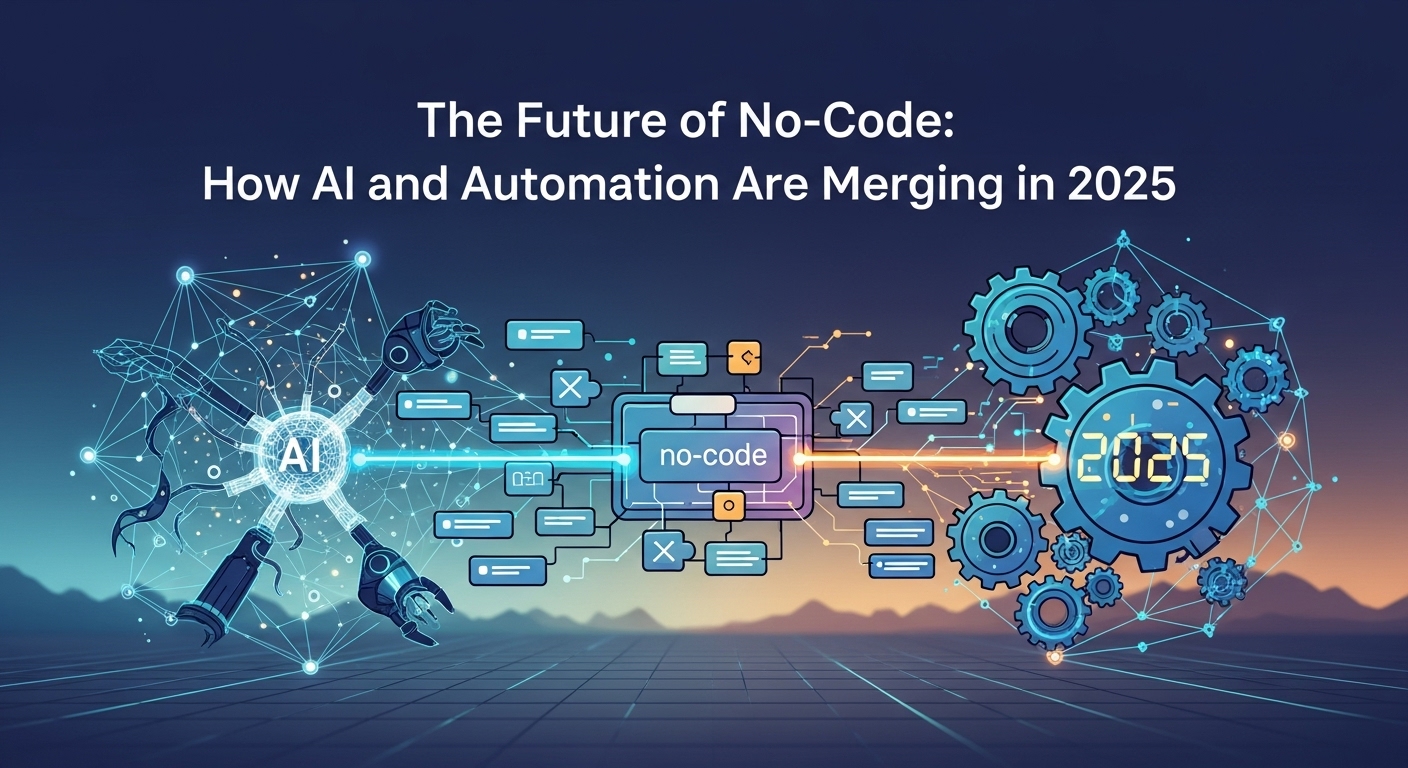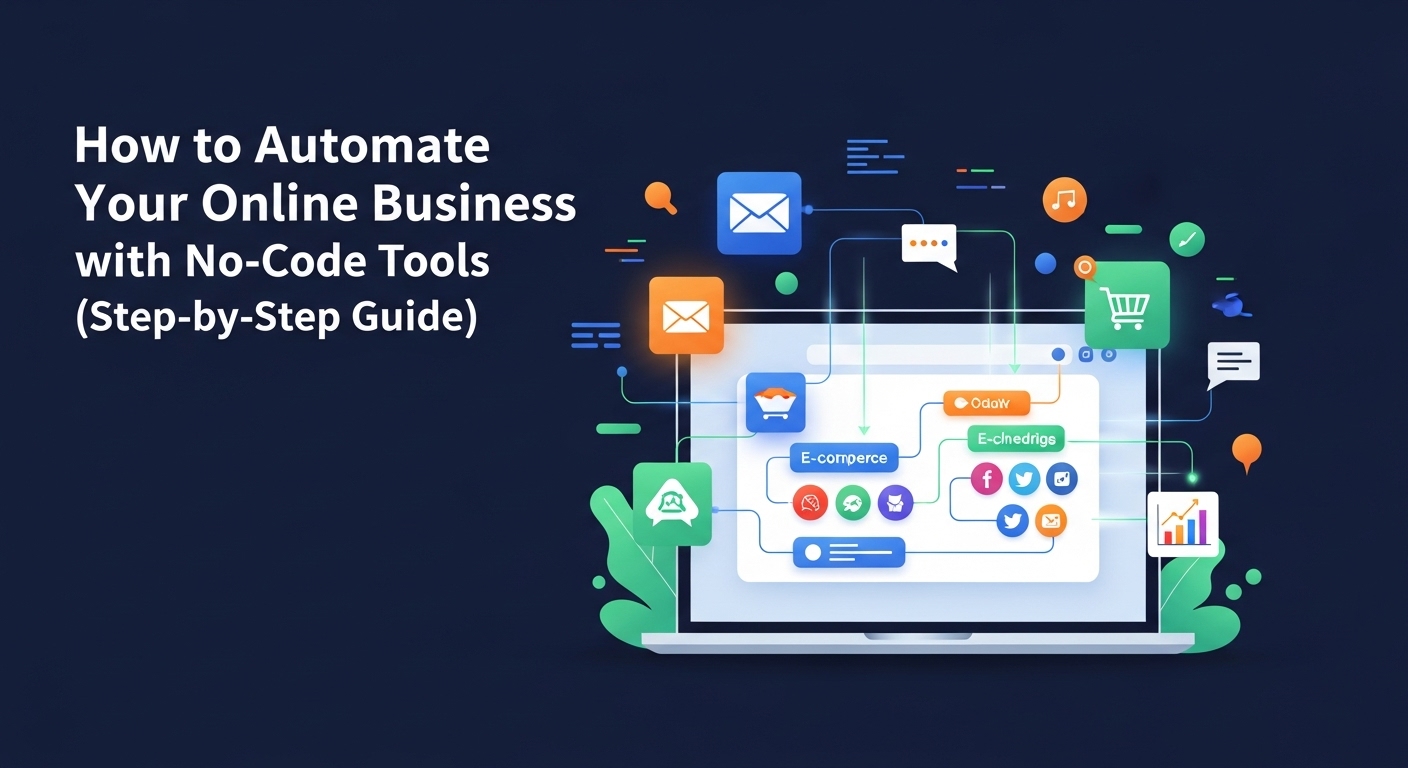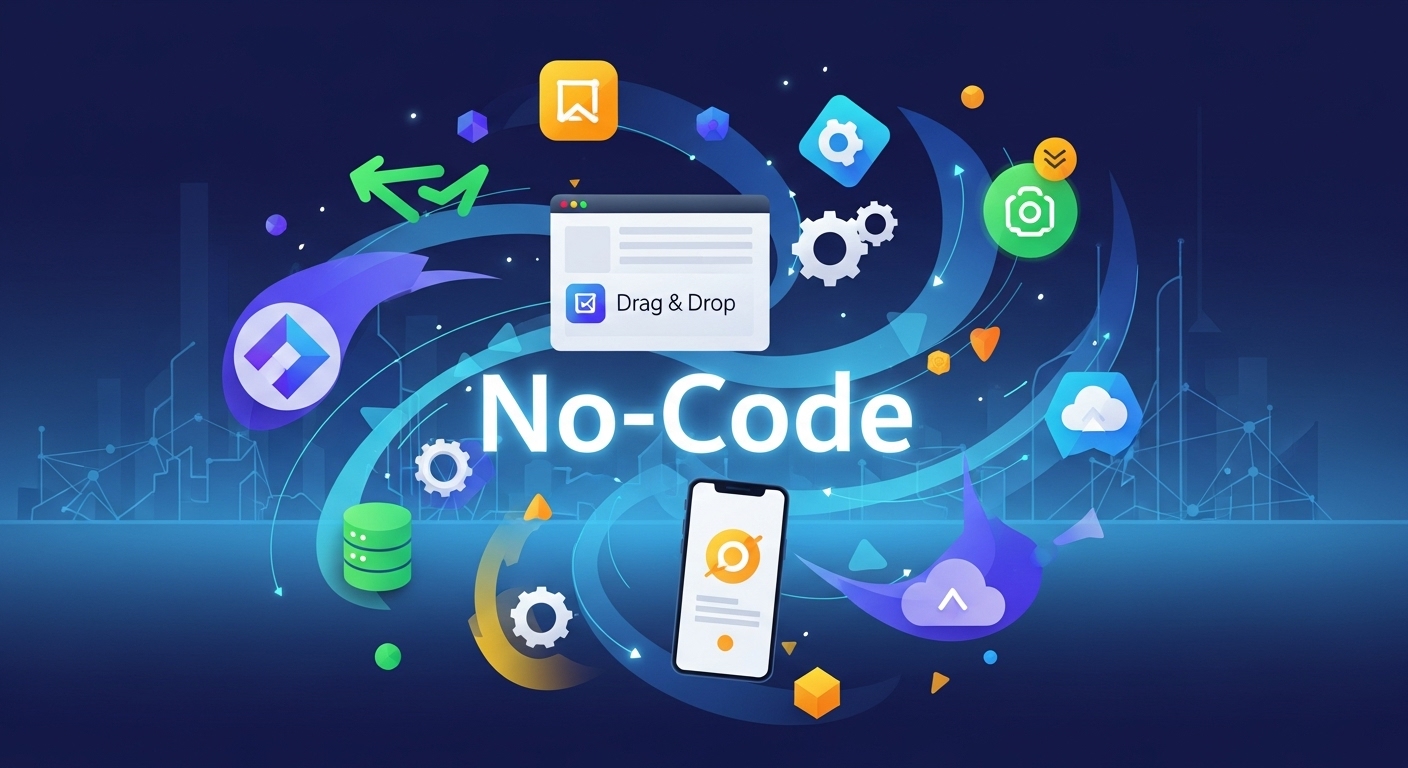The State of No-Code Today: A Quick Recap
Before we leap into the future, let’s ground ourselves in the present. The no-code movement has already transformed how we think about software development. At its core, no-code provides a visual development environment that allows non-technical users—marketers, entrepreneurs, operations managers—to build and deploy fully functional applications without writing a single line of code. It’s about dragging and dropping elements, defining logic through simple interfaces, and connecting disparate services with a few clicks.
Platforms like Bubble have enabled founders to build complex web apps, Webflow has revolutionized web design, and tools like Zapier and Make have become the essential digital glue for businesses, automating repetitive tasks and creating seamless workflows. This democratization of technology has unleashed a wave of innovation, allowing ideas to become minimum viable products (MVPs) in days, not months. The focus has been on accessibility and speed, empowering a new class of creators known as ‘citizen developers’. However, this landscape, as powerful as it is, is on the cusp of a seismic shift, driven by the explosive advancements in artificial intelligence.
The AI Tsunami: How Artificial Intelligence is Reshaping No-Code
Artificial intelligence is no longer a futuristic buzzword; it’s a practical technology being integrated into the tools we use daily. For the no-code world, AI isn’t just another feature—it’s a foundational layer that will redefine what’s possible. The synergy between AI and no-code is creating a new paradigm where the barrier to creation is not technical skill, but the clarity of your idea.
Generative AI in the No-Code Builder
The most visible impact of AI is in the building process itself. Imagine opening your no-code editor and, instead of a blank canvas, you have a conversational partner. This is the promise of generative AI. You’ll be able to describe what you need in plain English: “Create a user dashboard with a sidebar navigation, a main content area showing key metrics, and a profile dropdown in the top right corner.” The AI will then generate the entire layout, complete with responsive design and placeholder data. This moves beyond templates to truly bespoke creation at the speed of thought. Tools are already emerging that can turn a simple sketch or a Figma design into a functioning webpage, and by 2025, this will be a standard feature in leading no-code & automation tools.
Intelligent Workflows and Logic
Building the user interface is only half the battle; the real power of an application lies in its logic and workflows. This is where AI’s impact becomes truly profound. Currently, setting up automation requires a user to manually define every trigger, action, and condition. It’s powerful, but can be complex. In the near future, AI will build these workflows for you based on your goals. You could instruct your platform: “When a new lead from our Facebook Ads campaign signs up, enrich their contact data using Clearbit, add them to our ‘Hot Leads’ list in HubSpot, and assign a task to the sales rep for that region.” The AI would not only understand the intent but also identify the necessary API connections, handle data mapping, and construct the entire multi-step automation, suggesting optimizations along the way.
AI-Powered Data Analysis and Insights
No-code applications are often built to collect and manage data. Traditionally, analyzing that data required exporting it to another tool like Google Sheets or a dedicated BI platform. The fusion of AI is bringing the analysis directly into the application. An e-commerce app built on a no-code platform could have a built-in AI analyst that automatically identifies sales trends, flags at-risk customers, and suggests inventory adjustments. This native intelligence means users can make data-driven decisions in real-time without ever leaving the platform, transforming every no-code app into a smart app.
Automation on Steroids: The Next Evolution of Connectivity
If AI is the brain, automation is the nervous system that gets things done. The merger of these two forces is elevating automation from simple, reactive tasks to complex, proactive operations. The next generation of no-code & automation tools will be less about connecting apps and more about orchestrating intelligent business processes.
Proactive and Predictive Automation
The classic automation paradigm is reactive: “If This, Then That.” A new email arrives (the ‘if’), so you save the attachment to Dropbox (the ‘that’). The future is predictive. AI models, trained on your business data, will anticipate needs and trigger automations proactively. For example, an AI could analyze project management data and predict that a project is at risk of missing its deadline. It could then automatically reschedule lower-priority tasks, notify the project manager with a suggested action plan, and block out focus time in the team’s calendars. This is automation that doesn’t just execute commands but actively works to achieve desired outcomes.
The Rise of AI Agents
The concept of autonomous agents is moving from science fiction to reality, and no-code platforms will be the primary way to build and deploy them. These AI agents will be persistent, goal-oriented automations that can perform complex, multi-step tasks. You could deploy an agent with the goal of “Monitor our top five competitors and compile a weekly report on their marketing activities.” This agent would autonomously browse websites, track social media mentions, analyze press releases, and use a large language model (LLM) to synthesize the information into a concise summary, delivered to your inbox every Monday morning. Building such an agent will not require a team of Python developers, but a citizen developer using a visual, no-code interface.
What Does This Convergence Mean for You?
This technological evolution isn’t just for developers; it will have a tangible impact on anyone involved in building or running a business. The fusion of AI, no-code, and automation will create unprecedented levels of efficiency and capability.
For Entrepreneurs and Startups
The ability to build more sophisticated, AI-powered applications without technical expertise or massive capital investment will level the playing field. Founders can test complex business ideas, build intelligent MVPs, and iterate faster than ever before. The cost and time to launch a tech-enabled business will plummet, fueling a new wave of entrepreneurship.
For Marketers and Business Operations
For professionals in marketing, sales, and operations, this merger means hyper-personalization at scale. Imagine automated marketing campaigns that adapt their messaging in real-time based on a user’s behavior, or internal procurement systems that can predict inventory needs and automatically negotiate with suppliers. The efficiency gains from intelligent automation will free up teams to focus on strategy and creativity, rather than manual, repetitive work.
The Challenges and Considerations Ahead
Of course, this bright future is not without its challenges. As we hand over more complex tasks to AI-driven systems, questions of governance, security, and ethics come to the forefront. How do we ensure the data used to train these AI models is secure and private? When an AI generates a complex workflow, how do we audit it for errors or biases? The ‘black box’ nature of some AI models can make debugging a significant challenge. Furthermore, a new skill set will emerge, focused not on coding, but on ‘prompt engineering’ and the ability to clearly articulate intent to an AI system. Navigating these challenges will be crucial for the responsible adoption of this powerful technology.
Get Ready for the AI-Powered No-Code Revolution
The line between an idea and a functional, intelligent application is becoming thinner every day. The convergence of AI and automation within the no-code ecosystem is not an incremental improvement; it is a fundamental revolution. We are moving away from a world where we manually build software, piece by piece, to one where we simply state our intent and collaborate with an AI to bring it to life. By 2025, the most successful no-code & automation tools will be those that have seamlessly integrated AI as their core engine, not just a bolt-on feature. The future of creation is conversational, intelligent, and more accessible than ever. The only question left is: what will you build?


